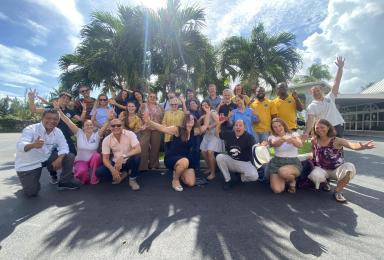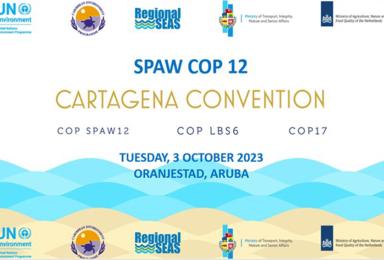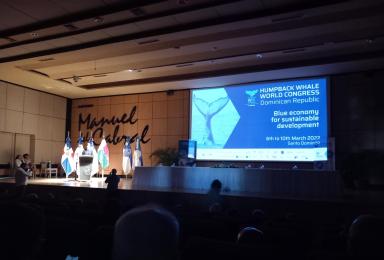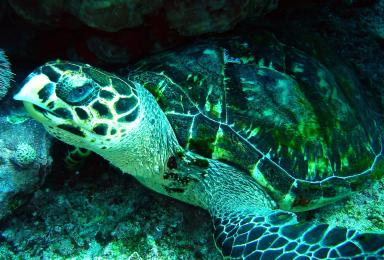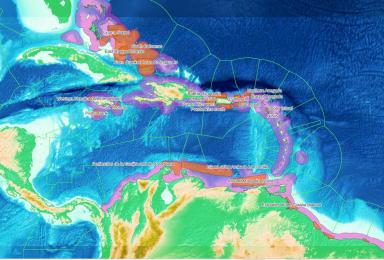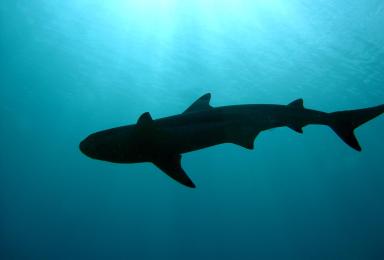CAMAC
CAribbean marine Megafauna and anthropogenic ACtivities
The habitats of most species of marine megafauna (sharks, sea turtles, marine mammals and seabirds) are often the same as those of human activities such as fishing, shipping and tourism. This overlap leads to frequent interactions between these activities and marine species. It is in this context that the CAMAC project was conceived.
Marine megafauna and human activities: limited knowledge of interactions
Marine megafauna are particularly sensitive to the negative impacts that these interactions can generate. These can lead to changes in their vital behaviours but also to injuries. A large proportion of the species in the Caribbean are thus vulnerable. But these interactions can also be a problem for human activities. For example, bycatch and depredation (snatching of fish in nets or on lines by predatory species) can lead to degradation or loss of fishing gear, or reduced yield. In addition, some activities are directly dependent on the presence of marine megafauna species, such as whale-watching or scuba diving.
In the Caribbean, the various interactions between megafauna and human activities are well identified, but poorly quantified or controlled.
CAMAC, a Caribbean cooperation project
The CAMAC project, for CAribbean marine Megafauna and anthropogenic ACtivities, aims to improve knowledge of these interactions and strengthen regional collaboration. The aim is to provide Caribbean governing bodies and environmental stakeholders with recommendations and tools to reduce the negative impacts of interactions between marine megafauna and human activities.
To achieve this, five specific objectives have been defined
- to improve knowledge of Caribbean marine megafauna (marine mammals, marine turtles, seabirds, sharks and rays);
- to assess the environmental and socio-economic issues related to interactions between human activities and marine megafauna
- Strengthen regional cooperation and the skills of stakeholders (in particular by reinforcing existing networks);
- strengthen the commitment of young Caribbeans to the conservation of megafauna and marine heritage in general;
- to make recommendations to the governing bodies in order to support the implementation of the most appropriate policies possible.
The geographical scope of this project concerns at least the whole of the Lesser Antilles, but also the Dominican Republic, Haiti and Jamaica to the west, and the exclusive economic zones of the countries and territories of the Guiana plateau to the southeast. The CAMAC project will therefore involve international partners.
Four main work areas
The CAMAC project will run for five years, during which the partners involved will work in four areas.
The first year of the project is essentially dedicated to developing partnerships and defining scientific protocols. The partners involved in 2023 are the Agoa Sanctuary, which is the project leader, the SPAW RAC (Regional Activity Centre for the Specially Protected Areas and Wildlife Protocol of the Greater Caribbean Region) and the NGO Haiti Ocean Project.
Area 1
Strengthen links with the fisheries sector and assess interactions with marine megafauna.
Area 2
Strengthen knowledge and monitoring of anthropogenic impacts on marine mammals and sea turtles via the stranding networks.
Area 3
Raise awareness of marine megafauna conservation and strengthen environmental education skills through school exchanges.
Area 4
Strengthen knowledge of the abundance and distribution of marine megafauna of the Caribbean region via a regional inventory.
A European project
CAMAC is a project co-financed by the European Regional Development Fund (ERDF) within the framework of the Interreg Caribbean programme up to 85% for a total budget of 758 397 € in the first year.
CAMAC project highlights
CAMAC project phase 1 closing workshop
CAMAC recognised at the COP SPAW
Launch of the CAMAC project
The main results of the CAMAC project
Camacata
Study: distribution of the hawksbill turtle
Improving knowledge of marine mammals and seabirds
An action plan to improve knowledge of elasmobranchs
Get the latest news on the CAMAC project
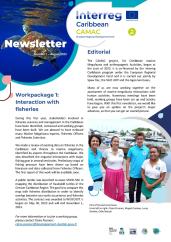
The CAMAC project newsletter
Follow the progress of the CAMAC project by consulting the newsletter produced by the technical team (in English only).
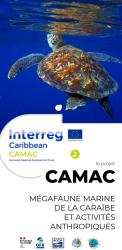
CAMAC
Téléchargez le dépliant du projet CAMAC. / Descargue el folleto de presentación del proyecto CAMAC 2023. / Download the CAMAC 2023 project presentation leaflet.
Photo banner credit: Benjamin Guichard / Office français de la biodiversité


